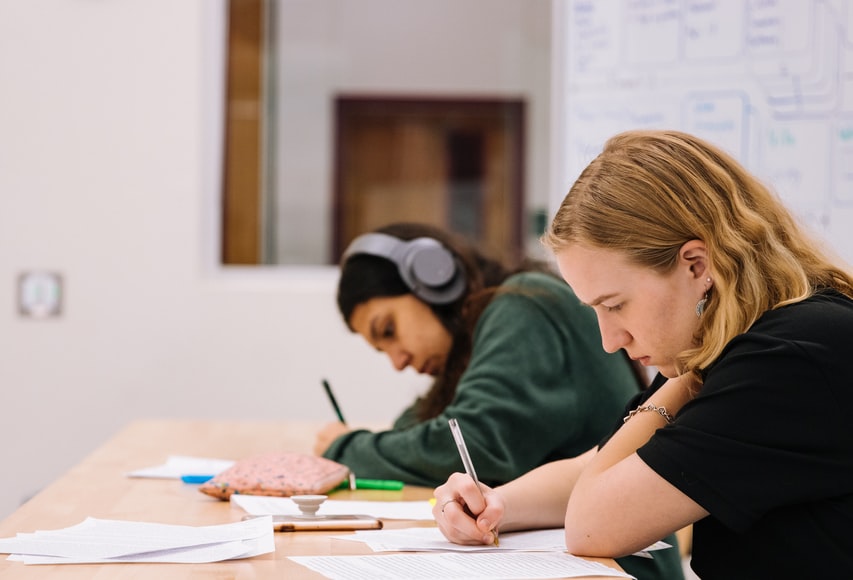
We are a reader-supported education publication. When you buy through links on our site, we may earn an affiliate commission to help us keep providing content.
Many teachers struggle to teach students with disabilities because their symptoms can distract the entire class and keep them from achieving academic success. These kids have a ton of potential. You simply have to know how to tap into it. That’s where books about students with disabilities can be helpful.
Glean some wisdom from psychiatrists, parents and other teachers by picking up one — or all — of the following books. These resources will help you engage students with disabilities so they can reach their full potential, academically and otherwise.
1. “A Mind at a Time” — Mel Levine
First published in 2003, “A Mind at a Time” was one of the first works to challenge standardized teaching. This book suggests that, rather than investing in a one-size-fits-all approach, educators should personalize lesson plans to meet their students’ needs. The author makes a compelling case for students with disabilities and provides tips for identifying learning patterns to help them overcome weaknesses and produce positive results. Teachers make progress when they understand that individual minds need individual learning strategies.
2. “Using Technology to Engage Students With Learning Disabilities” — Billy Krakower and Sharon Plante
The global edtech market is expected to grow another 20% by 2028, which means there’ll be plenty of emerging technologies to help you engage students with disabilities. In fact, there’s already a plethora of devices available to help these kids learn and grow. In this volume, you’ll discover tools to provide better content, promote collaboration and teach study skills. Build positive opportunities for students to show what they know with assistive technologies and tools in the special education classroom.

3. “There’s a Boy in Here: Emerging from the Bonds of Autism” — Judy Barron and Sean Barron
Some teachers feel like they could make a breakthrough with their special needs students if only they could get inside their heads. If you share this sentiment, pick up a copy of this insightful read. Thanks to its poignant account of the experiences of a family dealing with autism, the book is on the recommended reading list of the National Leadership Consortium on Developmental Disabilities. Ultimately, it will help you understand the family dynamic and challenges facing students with disabilities like autism.
4. “The Special Needs School Survival Guide” — Cara Koscinski
Some books about students with disabilities are geared more toward parents. However, teachers can glean just as much useful information, including activity ideas, definitions and examples of what different therapies look like in schools. The question and answer format makes this an easy read for anyone interested in educating and understanding students with disabilities. Whether you’re teaching kids with sensory processing disorders or behavioral issues, this book is sure to come in handy.
5. “Whole Brain Teaching for Challenging Kids” — Chris Biffle
Reduce frustration and increase engagement with the Whole Brain Teaching method. Chris Biffle outlines this strategic approach in his book so you can harness challenging kids’ energy and use it to get them excited about learning. Develop interactive lessons with the included activity ideas, tips and techniques. Use the step-by-step guide to cultivate a dynamic learning environment in your own classroom. Then, watch your high-energy kids flourish.

6. “All About IEPs: Answers to Frequently Asked Questions” — Peter Wright, Pamela Wright, Sandra O’Connor
Both parents and teachers have questions about Individual Education Plans, and this book addresses practically all of them. Find clear, concise answers to commonly asked questions and learn what the law has to say about IEPs, parental rights and consent. The text also provides details and guidance on assistive technology and strategies to resolve disagreements. Whether you’re a first-year teacher or a veteran instructor who wants to gain more perspective, “All About IEPs” is your key.
7. “The Behavior Code: A Practical Guide to Understanding and Teaching the Most Challenging Students” — Jessica Minahan and Nancy Rappaport
“The Behavior Code” is one of the best resources for educators because it helps them see disability from students’ perspectives. In this book, a child psychiatrist and behavioral analyst share their approach to deciphering challenging behavioral patterns and matching them with strategies to get students back on track. Use the same systematic recipe for success in your classroom with included worksheets and other helpful resources. This way you can focus on rewarding rather than punishing little learners.
Patience and Persistence
There’s no one-size-fits-all approach to teaching students with disabilities, and the path to success is anything but linear. Therefore, it’s best to pick and choose which methods work best for your classroom and personalize strategies for your students. With persistence and a whole lot of patience, your class will make progress and your kids will reach their fullest potential. Use these books about students with disabilities to help you on your path.






